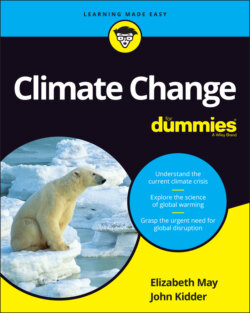Читать книгу Climate Change For Dummies - Elizabeth May - Страница 33
Changing to alternative energies
ОглавлениеFossil fuels (see Chapter 4) are the primary source of the human-produced GHGs causing global warming. Although they’ve fueled more than a century of human progress, it’s time to leave them with the dinosaurs. Fortunately, a wide array of energies is waiting to take the place of oil, coal, and gas.
Here’s a list of renewable resources — energy that doesn’t run out, unlike fossil fuels, and doesn’t pump more carbon into the atmosphere:
Geothermal: Jules Verne was wrong; the center of the planet doesn’t contain another world, but it does have plenty of heat. People can use that heat to boil water to produce steam that propels turbines and generates electricity. Even areas without geo-heat sources to boil water can heat homes through geothermal energy (the warmth of the earth).
Hydro: People can harness hydropower, or water power, to turn turbines and create electricity.
Solar: Humanity can use the sun’s warmth in a few ways. Solar cells, like you see on some roofs, can convert sunlight to electricity. People can also heat buildings and water with the sun’s direct heat.
Waste: Garbage is more than just trash. It offers astounding possibilities. People can harness the methane emitted from dumps, burn the byproducts of agriculture as fuel, and even use old frying oil as a type of diesel.
Wind: Remember that pinwheel you had as a kid? Giant versions of those wheels are popping up all over the world as wind turbines, generating clean electricity for homes, businesses, and entire energy grids.
Feeling charged up? Check out Chapter 13 to further explore the renewable-energy possibilities, and Chapter 17 to see how rapidly some of these changes are happening already.
